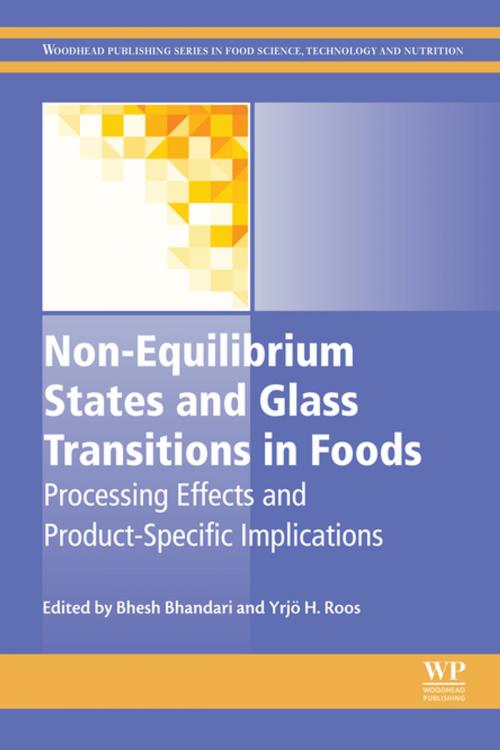Non-Equilibrium States and Glass Transitions in Foods
Processing Effects and Product-Specific Implications
Nonfiction, Science & Nature, Technology, Food Industry & Science| Author: | ISBN: | 9780081003350 | |
| Publisher: | Elsevier Science | Publication: | November 10, 2016 |
| Imprint: | Woodhead Publishing | Language: | English |
| Author: | |
| ISBN: | 9780081003350 |
| Publisher: | Elsevier Science |
| Publication: | November 10, 2016 |
| Imprint: | Woodhead Publishing |
| Language: | English |
Non-equilibrium States and Glass Transitions in Foods: Processing Effects and Product Specific Implications presents the tactics needed to understand and control non-equilibrium states and glass transitions in food, an essential element in maintaining the shelf-life and quality of foods.
After brief introductory chapters introduce the science behind non-equilibrium states and glass transitions in foods, the book details how glass transition temperature is affected by composition and the ways it influences processability and physico-chemical changes during the storage of foods, also exploring how these effects can be controlled.
The second section looks at individual foods, highlighting the implications of non-equilibrium states and glass transitions within these foods. Maintaining and improving the quality of food is of upmost importance to food companies who have to ensure that the shelf life of their products is as long as possible.
A large amount of research has been performed into glass transitions in food over the last few years, however there has not been a comprehensive review. This book fills that gap.
- Provides the only book on the market that covers non-equilibrium states and glass transitions in food from a practical standpoint
- Presents food industry professionals in the area of food quality with essential information on the effects of glass transitions and non-equilibrium states on the shelf life of specific products
- Edited by global leaders in glass transition technology in foods
Non-equilibrium States and Glass Transitions in Foods: Processing Effects and Product Specific Implications presents the tactics needed to understand and control non-equilibrium states and glass transitions in food, an essential element in maintaining the shelf-life and quality of foods.
After brief introductory chapters introduce the science behind non-equilibrium states and glass transitions in foods, the book details how glass transition temperature is affected by composition and the ways it influences processability and physico-chemical changes during the storage of foods, also exploring how these effects can be controlled.
The second section looks at individual foods, highlighting the implications of non-equilibrium states and glass transitions within these foods. Maintaining and improving the quality of food is of upmost importance to food companies who have to ensure that the shelf life of their products is as long as possible.
A large amount of research has been performed into glass transitions in food over the last few years, however there has not been a comprehensive review. This book fills that gap.
- Provides the only book on the market that covers non-equilibrium states and glass transitions in food from a practical standpoint
- Presents food industry professionals in the area of food quality with essential information on the effects of glass transitions and non-equilibrium states on the shelf life of specific products
- Edited by global leaders in glass transition technology in foods















